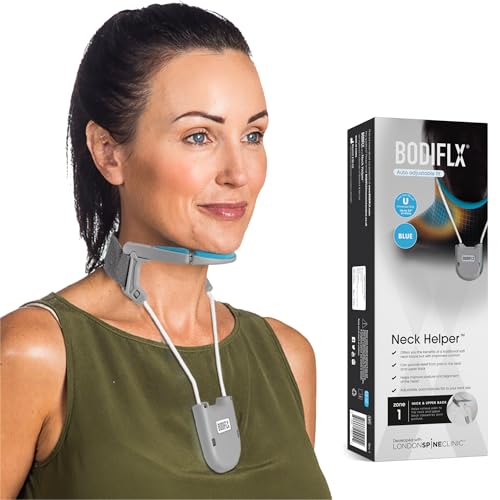
Begin by ensuring the device is the correct size for your four-legged friend. The links should fit snugly around the neck without causing discomfort. Adjust the links as necessary to achieve a proper fit. A well-fitted tool sits high on the neck, just below the chin, allowing for effective communication during walks.
Next, hold the device with the prongs facing inward and the open end facing towards the back of the animal’s head. This orientation prevents accidental injury and ensures that the prongs apply pressure evenly. Gently slide the contraption around the neck, ensuring it rests comfortably against the skin.
After positioning the device, secure it using the locking mechanism. Check that it clicks into place to prevent accidental release during outings. It’s crucial to monitor your pet’s behaviour after application, observing for any signs of discomfort or stress. If the animal shows signs of anxiety, consider adjusting the fit or consulting a professional for guidance.
Lastly, pair the tool with positive reinforcement techniques. Using treats and praise will help your companion associate the device with pleasant experiences, making walks more enjoyable for both. Remember, patience and consistency are key components in transitioning to this training tool.
Selecting the Right Size Prong Collar for Your Canine Companion
Choose a collar that fits snugly but not too tightly. Measure the circumference of the neck where the collar will sit, adding around two inches for comfort. A well-fitted device should allow for two fingers to fit comfortably between the neck and the collar.
Types of Links
Consider the number of links in the design. Some models come with removable links, allowing for easy adjustments. If the collar feels too loose or tight during initial fitting, adjust by adding or removing links to achieve the right fit.
Material and Weight
Evaluate the material used in construction. Stainless steel options resist rust and wear, while lighter materials may be more suitable for smaller breeds. Ensure the weight does not cause discomfort to the animal, especially for those with sensitive skin.
Preparing Your Pet for the Fitting
Start with a calm environment. Choose a quiet space free from distractions. Have treats at hand to reward positive behaviour. This will help create a positive association with the new accessory.
Ensure the animal is comfortable with handling. Spend some time gently touching their neck and adjusting the fur, so they get used to being touched in that area. Gradually introduce the new item by letting them sniff it before attempting to place it around their neck.
Place the item on the pet while ensuring it sits high on the neck, just below the ears. Avoid forcing it; if the animal resists, take a step back. Allow them to explore the fitting at their own pace. Using treats during this process can ease any tension.
Monitor their reactions closely. A relaxed stance and wagging tail indicate comfort, while a stiff body or growling might signal unease. If discomfort arises, take a break and try again later. Patience is key.
After securing it, allow some time for the pet to adjust. Short walks can help them acclimatise to the feeling. Rewards during and after these sessions reinforce positive behaviour. For more insights into your pet’s behaviour, check out this article on why does my dog take one piece of food.
Steps to Properly Attach the Prong Collar
Ensure the device is oriented correctly, with the prongs facing inward towards the neck. This positioning allows for effective communication without causing discomfort. Begin by holding the collar open with one hand, allowing for easy access.
Gently slide the collar around the neck, making sure it sits high, just below the ears. This placement helps in providing a more immediate response when tension is applied. Adjust the collar so that it is snug but not overly tight; a good rule of thumb is to allow a finger to fit comfortably between the collar and the neck.
Securing the Collar
Once the collar is positioned correctly, connect the ends. Ensure the release mechanism clicks securely, indicating a tight fit. Double-check that the collar is not twisted, as this can cause discomfort and affect functionality.
Final Adjustments
After securing, give the collar a slight tug to confirm it remains in place. Observe the canine’s reaction. If there is excessive discomfort or signs of stress, readjust the fit. A proper attachment allows for a natural range of movement without hindrance.
Always monitor behaviour during initial use, ensuring a positive experience. Gradually introduce various training scenarios to help the furry companion adapt comfortably to the new equipment.
Adjusting the Collar for Comfort and Safety
Begin by ensuring the fitting is snug but not too tight. A good rule of thumb is to allow enough space to insert two fingers between the neck and the apparatus. This prevents choking while ensuring it remains effective.
Follow these steps for an optimal adjustment:
- Check the links: Make sure there are no damaged or bent links that could harm the animal.
- Position the device correctly: It should sit high on the neck, just below the jawline. This placement helps in effective communication without causing discomfort.
- Test the tightness: After fastening, gently pull on the device to see if it shifts. If it moves excessively, tighten it slightly.
- Observe reactions: Pay close attention to any signs of distress or discomfort. If the furry friend displays anxiety or tries to scratch at the fitting, it may need adjustment.
- Regular checks: As weight and size can change, routinely check the fit. Growth spurts or weight changes may necessitate readjustments.
Always prioritise safety. If any irritation occurs, consider consulting a professional trainer or veterinarian for alternative options. A well-fitting accessory can enhance training and communication, making walks enjoyable for both the owner and the pet.






